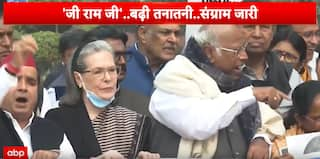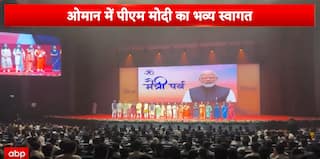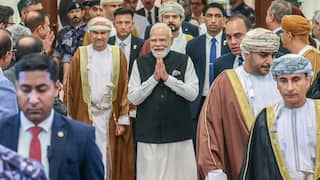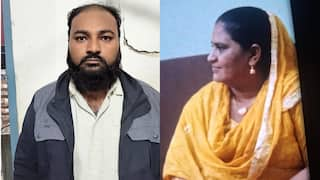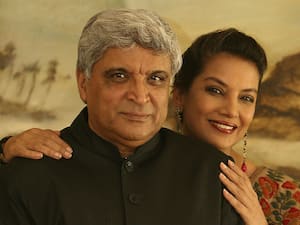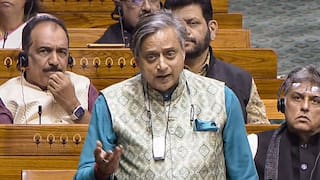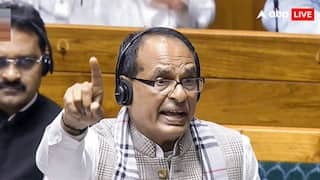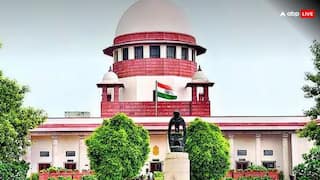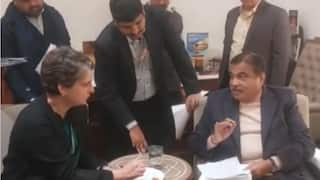6 Myths Around Childhood Cancer You Need To Know
Debunking myths is imperative for fostering a better understanding of childhood cancer, supporting affected children, and ensuring they navigate their challenging journeys with hope and resilience.

Causes Of Childhood Cancer
Dr. Vasudeva Bhat K, M.D. D.M. (Pediatric Oncology), who is an Associate Professor and In Charge Head, Division of Pediatric Hematology and Oncology at Kasturba Medical College, Manipal Academy of Higher Education, Manipal said, "Childhood cancers are unique type of cancers, the etiology of which is uncertain however majority of these cancers are curable if diagnosed early. In India, it is estimated that nearly 78,000 children <19 years of age are diagnosed with one or the other form of cancer."
Common cancers seen in childhood include Acute Leukemia (Blood cancers), solid tumors arising from organs like Adrenal gland- neuroblastoma, Kidney-Wilms’ Tumor and Brain tumors like Medulloblastoma. The commonest type seen in childhood is Blood cancers followed by Brain tumors.
Outcome of childhood cancers is one of the most impressive amongst all cancers across age groups put together.
Dr. Vasudeva Bhat further said, "The most common myth of childhood cancer is that these disorders are genetic in nature. Genetic cause for cancer in childhood account for nearly 5-10% of cancers only while the rest of 90-95% is due to multifactorial reasons."
The genetic disorders include:
- Inherited genetic changes- Which are transmitted from parents
Example- Retinoblastoma- Tumor of the eye can be inherited from parents, if the parents had the tumor in the childhood. Similarly Li-Fraumeni syndrome, Beckwith-Wiedemann syndrome, Fanconi anemia, and von Hippel-Lindau syndrome, also have an increased risk of childhood cancer.
- Genetic changes early in development
Example- Children with Down’s syndrome are 10–20 times more likely to develop leukemia than children without Down’s syndrome.
The environmental exposure which leads to cancer formation in children include- exposure to cigarette smoking, prolonged UV ray exposure, exposure to repeated ionising radiation like CT scans, exposure to pesticides and certain viral infections.
Myths In And Around Childhood Cancer
Now that we know the casues, let's delve into the myths and misconceptions related to childhood cancer as addressed by experts.
Dr. Muralidhar Bora, who is an MBBS, DNB (Radiation Oncology), FIHPRT and Consultant Radiation Oncology mentioned the following myths prevelant to childhood cancer.
Myth 1: Childhood Cancer Is Rare
Fact: While childhood cancer is less common than adult cancer, it is not as rare as often believed. According to the American Cancer Society, approximately 1 in 285 children in the United States will be diagnosed with cancer before the age of 20. Childhood cancer rates may vary, but it is crucial to recognize that it is a significant health concern that affects numerous families worldwide.
Myth 2: Childhood Cancer Is Preventable
Fact: Unlike certain adult cancers that can be linked to lifestyle factors such as smoking or poor diet, childhood cancer prevention is not well understood. Many pediatric cancers occur due to genetic mutations or factors that are not preventable. Regular pediatric check-ups and early detection can, however, improve outcomes.
Myth 3: Childhood Cancer Only Affects Older Children
Fact: Childhood cancer can occur at any age, from infancy to adolescence. Each age group may have specific types of cancer more commonly associated with it, but it is essential to be aware that cancer can affect children of all ages.
In addition, Dr. Rajat Bhattacharya who is a Senior Consultant, Paediatric Haematology Oncology Transplantation and Cellular Therapy at Apollo Cancer Centres, Kolkata listed the following:
Myth 4: There Are Specific Symptoms Of Childhood Cancer
Fact: Childhood cancers do not present with any specific complaints and mostly mimic common childhood disease like infection. Persistence of non specific symptoms should alert parents and physicians about the possibility of cancer.
Myth 5: Children Develop Similar Types Of Cancers As Adults
Fact: Although there are some similarities the spectrum are different. Two common cancers in children are leukaemias( blood cancer) and brain tumours followed by lymphoma (cancer of lymph glands).
Myth 6: Children Cannot Tolerate Chemotherapy
Fact: Children actually can tolerate chemotherapy much better than adults and they also recover from side effects faster than older adults. Early diagnosis and appropriate treatment with newer modalities including various new drugs and immunotherapy where applicable are absolutely crucial in improving the outcome while reducing the toxicity of cancer treatment in children.
Talking further about the side effects of chemotherapy, Dr. Prashant Mehta, who is a Senior Consultant at the Dept of Medical Oncology in Amrita Hospital, Faridabad said, "To minimize adverse effects in very young children, drug doses are generally reduced and/or calculated in a different manner than in adults. Radiation therapy is generally avoided in very young children to avoid growth disturbances. Survivorship issues are much more pertinent in the context of children, like psychological impact, impact on sexual health, adolescent health, impact on education or school, and physical activity. Adequate counselling and support can help minimise some of these issues."
Lastly, Lt. Gen(Dr) Velu Nair, PVSM,AVSM,VSM** (Retd) who is the Head & Chief Consultant, Haemato-Oncology & Bone Marrow Transplant at Apollo Hospitals, Gandhinagar dispelled the myth of cancer being contagious saying, "One cannot contract cancer from another person as it is not contagious like flu and does spread through touch, play or sharing food. It is 100% safe for anyone, including children, to engage with children having cancer."
Anil Nair who is the CEO of St Jude India childcare centre concluded, "Myths about childhood cancer obstruct the path to understanding and healing. In addition to providing medical care, the mission is to dispel the stereotypes associated with childhood cancer. Rather than being defined by their limits, these young fighters are identified by their hope, resiliency, and boundless potential."
[Disclaimer: The information provided in the article, including treatment suggestions shared by doctors, is intended for general informational purposes only. It is not a substitute for professional medical advice, diagnosis, or treatment. Always seek the advice of your physician or other qualified healthcare provider with any questions you may have regarding a medical condition.]
Check out below Health Tools-
Calculate Your Body Mass Index ( BMI )











